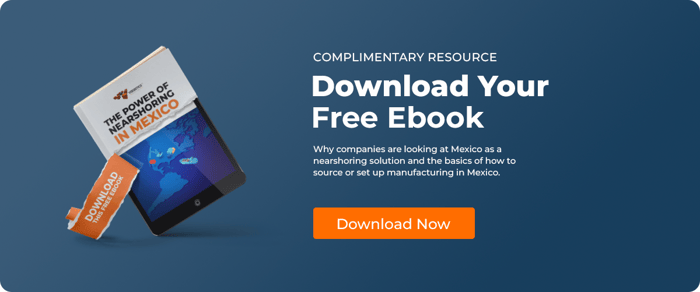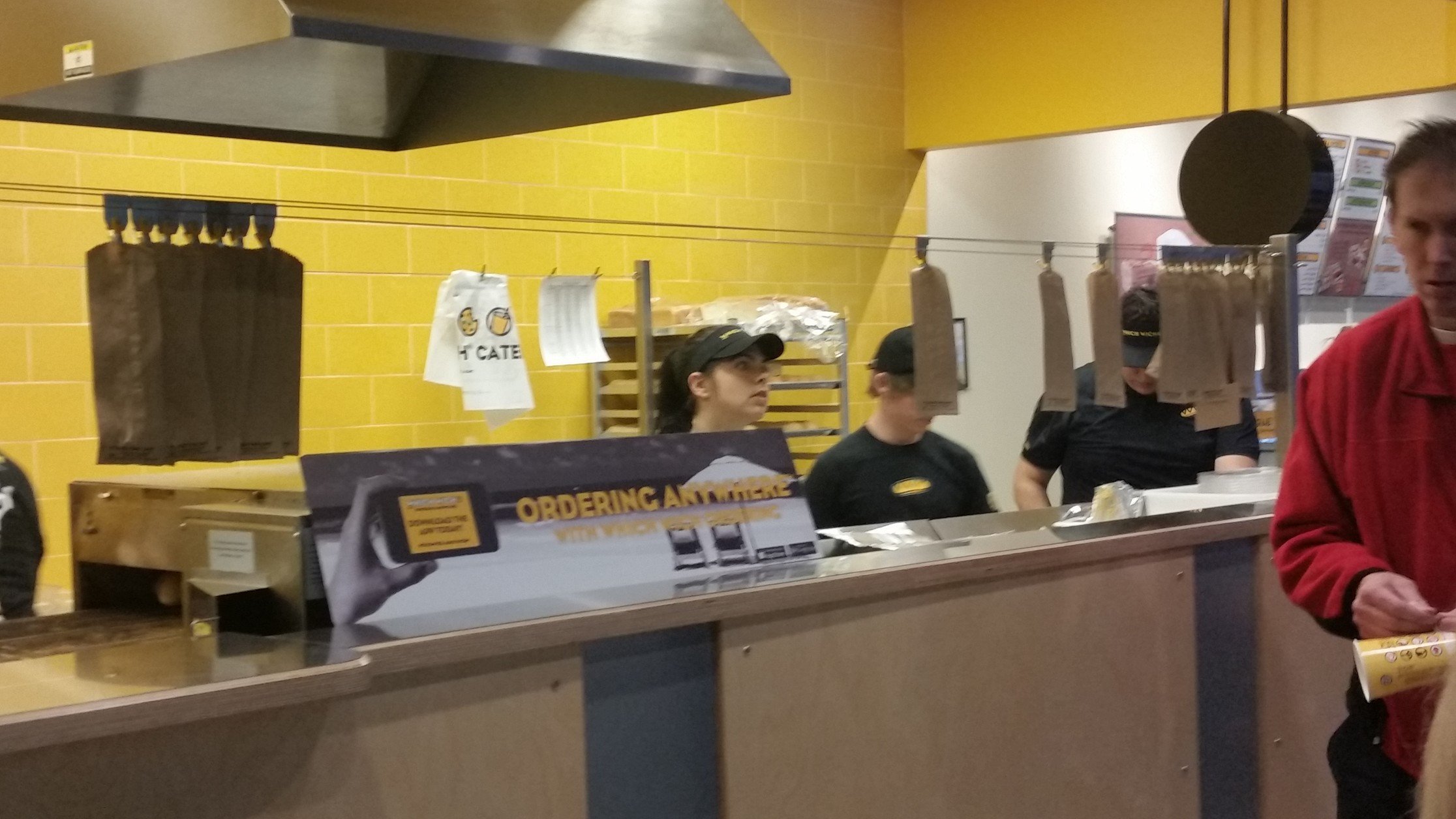Expanding manufacturing into Mexico offers major advantages—think strategic location, strong trade ties, and a competitive labor market. Yet the real difference-maker is choosing the right warehouse location, because one misstep can drive up transportation costs, increase regulatory risk, and limit access to talent.
According to recent research, Mexico’s industrial real-estate vacancy rate has fallen to just 1.1% in key logistics markets, underlining how tight the warehousing market has become for companies moving manufacturing across the border.
In this article, we’ll guide you through what to consider when selecting a warehouse for your new factory in Mexico—covering proximity to transport infrastructure, labor availability, regulatory compliance, and the unique warehousing challenges and opportunities that come with cross-border operations, including customs clearance, security, and transport modes.
Factors to Consider When Evaluating Warehouse Location
Proximity to transportation infrastructure is a crucial factor to consider when selecting a warehouse location near the U.S.–Mexico border. Businesses should evaluate the accessibility and availability of transportation modes such as highways, railroads, and ports, as well as the distance to major markets and suppliers. This can impact transportation costs and efficiency, as well as the speed and reliability of product delivery. Considering border towns can also offer transportation solutions for businesses, as they provide access to major highways and ports for easier movement of goods.
Availability of labor is another critical factor to consider when evaluating warehouses in border regions. Businesses should assess the local labor market and ensure that there is a sufficient pool of skilled and unskilled workers available to support their operations. This can include evaluating factors such as wage rates, language proficiency, and cultural differences.
Regulatory compliance and legal requirements are also important considerations when selecting warehouses in cross-border areas. Businesses should be aware of local regulations and requirements related to zoning, building codes, environmental regulations, and labor laws. Failure to comply with these regulations can result in fines, legal issues, and reputational damage.
Real estate costs and availability can also impact the selection of a warehouse location near the southern border. Businesses should evaluate factors such as land costs, rental rates, and the availability of suitable properties that meet their specific needs. This can include factors such as size, layout, and accessibility. Before moving manufacturing operations across the border, it is important to determine if the chosen real estate location is ideal for long-term production and logistics efficiency.
Unique Considerations for Warehousing in Mexico
Warehousing across the U.S.–Mexico border provides businesses with unique challenges and opportunities that must be taken into account when selecting a warehouse location. Businesses need to consider the distance from their suppliers and customers, proximity to transportation infrastructure, and availability of labor. They should also be aware of the different regulations and legal requirements in cross-border regions that can impact warehouse operations.
One of the unique considerations for warehousing in border areas is exposure to natural disasters. The region is prone to hurricanes, earthquakes, and floods, which can affect transportation availability and warehouse safety. Businesses should consider these risks when choosing a location and ensure that their products and employees are protected in the event of an emergency.
Another factor to consider is the cultural differences between the U.S. and Mexico. Businesses setting up a factory or distribution center across the border need to understand and navigate cultural nuances to establish successful operations. This includes language barriers, differences in business customs, and local labor practices.
Transportation modes and routes can also present unique challenges in cross-border warehousing. Infrastructure quality can vary depending on the area, and transportation costs may fluctuate with distance and accessibility. Working with a logistics consultant familiar with the regional transport network can help businesses select the most cost-effective and efficient options.
Finally, businesses should be aware of the different types of warehouse space available across the border. This includes raw land, build-to-suit developments, and existing warehouse facilities. The availability and cost of each option can vary depending on location, market demand, and specific operational needs.
Location can make or break your operation’s efficiency—some regions have become hotspots for warehousing and 3PL growth.
Which Mexican Cities Are Top Choices for Warehousing and Logistics?
Choosing where to build or lease a warehouse depends on infrastructure, trade access, and workforce availability. For companies planning operations with a 3PL in Mexico, these cities stand out:
- Monterrey: A top industrial hub with proximity to the U.S. border and access to skilled labor. Ideal for manufacturers using a 3PL in Mexico to manage nearshoring operations.
- Tijuana: Known for maquiladora activity and cross-border connectivity; perfect for companies serving West Coast markets.
- Querétaro: Emerging as a logistics hub due to its central location and rapid tech adoption in warehouse automation.
- Guadalajara: A prime location for electronics and high-tech fulfillment, supported by strong transport links.
- Ciudad Juárez: A cost-efficient border city that supports many U.S. suppliers partnering with a 3PL in Mexico for cross-border freight.
Each of these locations offers a unique mix of cost savings, infrastructure, and trade benefits that can support scalable warehousing and long-term logistics success.
Timing is everything—starting your site search early can prevent delays and help secure favorable real estate and labor conditions.
When to Start Your Warehouse Search in Mexico
Businesses planning to partner with a 3PL in Mexico should start their warehouse search 6–12 months before expected operations. Here’s a simple timeline to follow:
- Early Planning (Months 1–3): Define your inventory, transportation, and fulfillment needs with your 3PL in Mexico partner.
- Evaluation Phase (Months 4–7): Compare potential regions, tour available facilities, and assess local supply chain support.
- Preparation Phase (Months 8–12): Finalize contracts, secure utilities, and set up systems with your 3PL in Mexico provider for a smooth launch.
This proactive approach ensures your warehouse is fully operational and compliant before your first shipment hits the floor.
How to Evaluate Warehouse Location
When evaluating warehouse locations for a factory in Mexico, businesses should consider the availability and cost of utilities such as electricity, water, and gas. These factors can vary greatly depending on the location and can impact the cost of operations.
Businesses should also evaluate the local market and potential customer base when selecting a warehouse location. Being located in or near a major city or industrial center can provide access to a larger market and increase sales opportunities.
The availability and quality of infrastructure, such as roads and telecommunications, can also impact warehouse location selection. Being located in an area with modern and reliable infrastructure can improve operations and reduce costs.
Finally, businesses should evaluate the potential for expansion and growth when selecting a warehouse location. Choosing a location with room for growth and expansion can help businesses prepare for future growth and avoid the need to relocate in the future.
Mexico’s logistics infrastructure has evolved rapidly in recent years, directly fueling the expansion of modern warehouse operations.
The Impact of Logistics Improvements on Warehousing Growth
For companies partnering with a 3PL in Mexico, recent improvements in road connectivity, port modernization, and customs efficiency have made it easier to manage end-to-end supply chains. Upgraded transport routes reduce bottlenecks, while new logistics parks near industrial hubs allow faster turnaround between manufacturing and distribution.
These upgrades have also fueled investment in automation and technology, helping a 3PL in Mexico offer more advanced tracking, inventory control, and fulfillment visibility. As infrastructure becomes more reliable, companies can optimize warehouse locations further inland, not just along border regions.
Improved logistics systems mean better collaboration between manufacturers, distributors, and service providers. With a trusted 3PL in Mexico, businesses can now scale their warehousing operations more efficiently and achieve better cost and delivery balance across their entire supply network.
Consider using a Mexican 3PL or Mexican shelter company for your fulfillment needs
A Mexican shelter for manufacturers is a legally established structure in Mexico that allows companies to operate as a division. This arrangement provides numerous benefits and advantages for businesses. By utilizing a shelter, companies can focus solely on their core functions while entrusting the shelter company with essential tasks such as tax compliance, import/export procedures, accounting, and HR management.
Operating a fulfillment center through a Mexican shelter enables companies to stay competitive by significantly reducing costs, often by 50% or more. Leveraging Mexico's Maquiladora program, known as IMMEX, companies can swiftly transition to fulfillment operations in Mexico without the need to establish a separate Mexican entity. This allows businesses to enjoy the advantages of both worlds: the cost-saving benefits of operating in Mexico and the convenience of not having to go through the complex process of setting up a new company.
Overall, a Mexican shelter for manufacturers offers companies a streamlined and efficient approach to expanding their operations in Mexico. It provides a range of services and support that allow businesses to focus on their core functions while enjoying cost savings and operational advantages in the competitive manufacturing landscape.
In relation to the average client savings in Mexico's fulfillment centers industry, there is evidence illustrating a significant positive impact. Statistics indicate that on average, clients can expect to achieve a 50% reduction in costs within this particular industry. The data highlights substantial savings that are consistently achieved by businesses utilizing fulfillment centers in Mexico.
But, using a shelter company for Mexico 3PL fulfillment can have drawbacks as the training, systems, and processes are the responsibility of the company that sets up the shelter fulfillment center.
Beyond cost savings and logistics access, location decisions should also consider trade benefits available through Mexico’s Foreign Trade Zones (FTZs).
The Advantages of Foreign Trade Zones in Mexico
For companies partnering with a 3PL in Mexico, operating within a Foreign Trade Zone can unlock major customs and financial advantages. FTZs allow businesses to import, store, and even assemble goods with reduced duties and simplified customs procedures.
Key advantages include:
- Deferred or reduced tariffs on imported components.
- Simplified customs processing that speeds up cross-border flow.
- Improved inventory visibility under bonded warehouse management by a 3PL in Mexico.
- Enhanced competitiveness through lower administrative and compliance costs.
By positioning your warehouse in or near an FTZ, your business can gain flexibility in managing imports and exports while maintaining compliance and reducing overhead.
Why do Companies Hesitate to Outsource Order Fulfillment to a Third Party Logistics Provider (3PL)?
Many companies have reservations about outsourcing e-commerce fulfillment or B2B fulfillment to a third-party logistics provider. This hesitation primarily arises from concerns surrounding the relinquishment of process control. When businesses entrust their fulfillment processes to a third party, they might fear a potential loss of control over critical aspects of their operations. This includes having limited oversight and influence over the handling of their products, order processing, inventory management, and customer service. Such concerns can make companies hesitant to outsource their e-commerce fulfillment to an outsourced fulfillment center, as maintaining control over these processes is viewed as vital for ensuring customer satisfaction and maintaining their brand reputation.
The rapid growth of online retail has transformed how and where companies store products—reshaping Mexico’s industrial landscape.
Impact of E-Commerce on Warehousing Demand
A surge in e-commerce has significantly increased demand for advanced warehouse capabilities. Businesses using a 3PL in Mexico are now adapting to new consumer expectations for faster delivery and accurate inventory visibility.
Trends shaping demand:
- Last-Mile Fulfillment Expansion: 3PL networks are developing more micro-warehouses for quicker delivery turnaround.
- Automation Investments: Companies are adopting robotics and AI-driven systems through their 3PL in Mexico partners.
- Omnichannel Distribution: Retailers now expect integrated B2B and B2C fulfillment within shared facilities.
As e-commerce continues to evolve, partnering with a forward-thinking 3PL in Mexico ensures your business stays agile, scalable, and responsive to both regional and global market trends.
Consider Visigistics as Your Logistics Consultant for Warehouse Location Selection in Mexico
We understand how complex it can be to expand operations and choose the right warehouse location when setting up a factory across borders. Between logistics planning, legal requirements, and operational setup, even small missteps can impact cost and performance.
At Visigistics, we help businesses simplify this process. Our team guides you through every stage—from selecting the ideal warehouse site and evaluating transportation infrastructure to ensuring regulatory and labor compliance. Whether your goal is to optimize eCommerce fulfillment or strengthen B2B distribution, we make sure your move is strategic, compliant, and cost-efficient.
Let’s build your next phase of growth with confidence. Contact Visigistics today to create a clear path toward reliable logistics and long-term manufacturing success.






